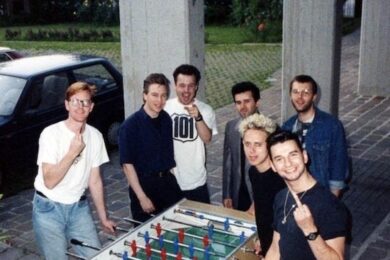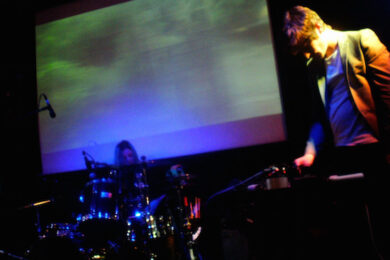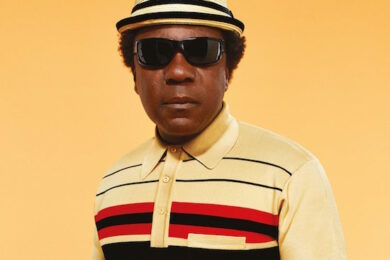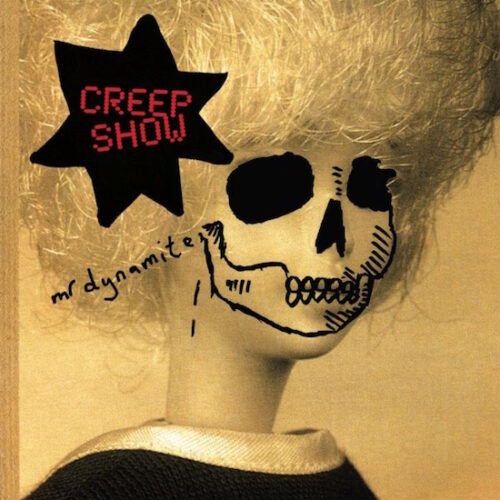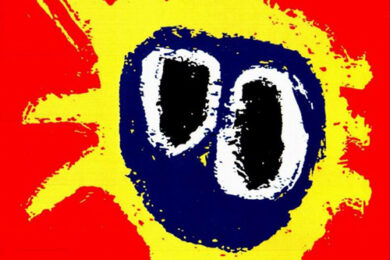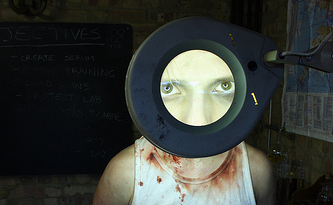It’s been said so often of Arctic Monkeys that it barely needs repeating, but a debut album that unwittingly set you up as one of the first models of modern, net-assisted fame could justifiably be considered something of an albatross. That the Sheffield group didn’t drop the ball at any point over the following few years was testament to the fact that they were always that little bit more than a straightforward pop band. Instead of being overly fazed by the usual trappings of sudden fame, they breezed past the possibility of a sophomore slump with the spiky Favourite Worst Nightmare and its crown jewel ‘Fluorescent Adolescent’, a genuinely affecting elegy for lost youth (with a cheekily ironic twist in the fact that frontman Alex Turner would have been about 20 when he wrote it). That follow-up Humbug – a muscular and uncompromising listen that served to confirm that they were sticking to their own agenda alone – wasn’t as commercially successful as its predecessors suggests, in the eyes of many commentators, that the group have something to prove with new album Suck It And See.
As far as these ears are concerned that’s far from the truth. In fact, the main thing Humbug ensured, with its dense guitar sound and scorched riffage (presumably inspired by producer Josh Homme), was that anyone simply interested in bellow-along festival moments would likely jump ship at the first sign of essentially chorus-less opener ‘My Propeller’. That was entirely a good thing – it ended up containing some of their finest material, albeit buried slightly deeper than before, as well as some of Turner’s most scathing lyrical barbs on the ferocious ‘Pretty Visitors’. And it wasn’t as though the combination of brattish energy and literary wit so present in their earlier music had disappeared – it was simply in the middle of a process of rediscovering its own limitations.
So it’s a little startling to hear that for the first time in their career Arctic Monkeys have lost a little of that edge. It’s far from disappearing entirely though – Suck It And See is still a very good pop record, choruses back at full force and Turner’s knack for catchy, clever couplets still evident throughout. Having cited Nick Cave as a major influence, he’s moved still further from the urban narratives of his first couple of albums into open, allegorical wordplay – a style he nails with an impressive hit rate. But it’s occasionally brought into the service of wistful, overly anthemic and plodding pop rock. Opener ‘She’s Thunderstorms’ and its immediate follow-up ‘Black Treacle’ are prime examples. Where Favourite Worst Nightmare exploded from the blocks with ‘Brainstorm’, and Humbug announced its presence with the caustic grind of ‘My Propeller’, ‘She’s Thunderstorms’ drifts lazily into earshot at a slow trudge, containing that little too much stadium DNA for comfort.
‘Black Treacle’ is a little better, but again it’s slow and stodgy, as though it’s being dragged through particularly sodden festival mud. It’s not until third track ‘Brick By Brick’ that we finally reach something approaching the jittery force of their earlier records, and if anything it serves to emphasise the difference. It’s here that Matt Helders’ always-inventive drumming finally has the chance to shine, sending the group careering through a maze-like arrangement that shifts dramatically in tone every few seconds.
If all this sounds a little too much like berating Arctic Monkeys for ‘maturing’, it’s not intended to be that simplistic. The band have always carried with them a sense of danger. Even at their most ponderous, their songs are anxious, possessed of a nervy energy that makes them nigh-on impossible to leave running as background music. Humbug already showed it was possible for the Monkeys to dramatically shift their music’s tone without losing that essential edge; the surprise, with Suck It And See, is that a few songs here simply lack it entirely. In places it’s even a little tired-sounding – despite its monstrous central riff, ‘Don’t Sit Down ‘Cause I’ve Moved Your Chair’ is sludgy and lumbering, never quite gathering enough momentum to take flight.
But when they get the balance right, during the album’s much better second half, the difference is dramatic. The dreamy ‘Piledriver Waltz’ does the slow strum thing beautifully, the group subverting the gravitas of its subject matter via careful, non-bombastic delivery. It then melts into the wonderfully titled ‘Love Is A Laserquest’, which deals with similar lyrical concerns as ‘Fluorescent Adolescent’ from a slightly older and wiser perspective. And closer ‘That’s Where You’re Wrong’ is the album’s best, the only moment on Suck It And See where they manage to pull off sprawling and epic without losing their earlier music’s firey intimacy.
Suck It And See paints a portrait of a band in transition, halfway between the scruffy agitation of their first couple of records and something far grander in scale. It hits more than it misses (just), but that they haven’t completely reached the journey’s endpoint is hardly surprising, given just how far they’ve already come over the course of the five years since their debut. After such monstrous early success, most bands would likely have remained static, churning out album after album of the same old street urchin chatter – then made a single grand stab at something new and fallen flat. That Arctic Monkeys have done neither is entirely to their credit, their considered evolution retaining their reputation as one of our most interesting and frequently brilliant pop bands.


